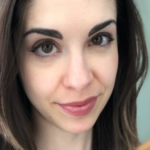
By Alana Van Der Sluys

All we hear about on social media lately is “hot girl summer.” Every year, there’s an enormous amount of pressure to change our bodies so that we can wear short shorts or get into a bikini for an outing at the beach.
This intense pressure leads to following crash diets, severely restricting our caloric intake, dialing it up at the gym, and, most importantly, fostering dissatisfaction with our bodies.
We end up so anxious about reaching our goal weight and looking a certain way in our summer outfits that we spend the whole summer worrying about how we look and what we’re eating instead of enjoying the weather and the company around us.
It’s okay–because I have the solution to your “hot girl summer” problem, a permanent solution.
Intuitive Eating
 This is a philosophy based on body positivity, health at every size, and weight neutrality. Those who follow intuitive eating believe that you don’t need to be a certain size or shape to wear a bikini; you just rock the bikini and feel comfortable in the skin you’re in right now!
This is a philosophy based on body positivity, health at every size, and weight neutrality. Those who follow intuitive eating believe that you don’t need to be a certain size or shape to wear a bikini; you just rock the bikini and feel comfortable in the skin you’re in right now!
It’s not about being on a diet or counting calories; it’s about healing the inner relationship you have with food and your body, and learning to recognize diet culture’s toxic messages that tell us we need to change our bodies or look a certain way in order to be beautiful or valued by society.
Not dieting AND still confidently rocking the bikini?
If that sounds more like a summer you can get on board with, here are the 10 core principles of Intuitive Eating, explained.
-
Reject the Diet Mentality
Rejecting what society tells us we need to look like and how we need to do it. The diet mentality is any message that promotes the preferences for thin, toned or otherwise “flawless” bodies.
-
Honor Your Hunger
Basically, eating whenever we’re hungry. To do this, we need to once again be in tune with our body’s hunger cues. This can take some time, as we’ve been letting diets control when we eat.
-
Make Peace with Food
Give yourself unconditional permission to eat. Not labeling foods as good and bad even though we know foods have different nutritional profiles. Yes, a donut is less nutrient dense than a kale salad, but that doesn’t mean it’s “bad.” “Bad” is a relative term.
-
Challenge the Food Police
The Food Police is diet culture in your own mind. We need to change those narratives that we learned from diet culture.
-
Discover the Satisfaction Factor
Food can be pleasurable and cultural, not just to survive. There’s a difference between being full and being satiated; when we’re satiated we have this emotional feeling of contentment that goes beyond simply feeling physically full. You can be physically full off a whole head of raw cauliflower but not be satisfied.
-
Feel Your Fullness
This is about understanding how to be intune with your body. In addition to principle 2, where we understand and recognize our hunger, principle 6 has us understand our fullness. We don’t want to overeat to the point of discomfort because we’re afraid we will never allow ourselves those particular foods again.
-
Cope with Your Emotions with Kindness
Here, we learn that negative emotions can be valuable learning tools, so we do not bury them or push them away. We use coping strategies to use them for positive growth.
-
Respect Your Body
With this principle, we learn to respect our bodies as they are, not trying to manipulate or punish them when they’re not as malleable as we hoped they would be (or that diet culture told us they could be). There is a lot at play with regard to your body’s natural shape and size, including genetics, which cannot be changed.
-
Movement—Feel the Difference
The principle is all about moving our bodies from a place of self-love and not punishment. There is a difference between movement and exercise, as well, that’s explored.
-
Honor Your Health—Gentle Nutrition
Not only do we honor cravings and eat what tastes good to us, but we also consider how we will feel after the meal. This helps debunk the common misconception that intuitive eating is eating pizza and ice cream all day.
Many of these principles might seem radical when compared to the diet mentality many of us have been believing for years; in fact, intuitive eating might seem like an impossible fantasy for you; but trust me when I say, as someone who has recovered from multiple eating disorders, that intuitive eating is the best thing I ever did to recover and truly begin enjoying my life.
 (Alana Van Der Sluys is the founder and CEO of Freedom with Food and Fitness (on Instagram @FreedomwithFoodandFitness), where she supports women who want to ditch diet culture, find food freedom through intuitive eating, accept (and maybe even love) their bodies, and reclaim joy in fitness. She is currently writing a book that will include strategies, actionable steps, and her own story to freedom from disordered behaviours, including orthorexia, binge-restrict cycles, and body dysmorphic disorder. She’s also a full-time English and journalism teacher, boy mom to one, a lover of wine and whisky, and an avid reader of all genres.)
(Alana Van Der Sluys is the founder and CEO of Freedom with Food and Fitness (on Instagram @FreedomwithFoodandFitness), where she supports women who want to ditch diet culture, find food freedom through intuitive eating, accept (and maybe even love) their bodies, and reclaim joy in fitness. She is currently writing a book that will include strategies, actionable steps, and her own story to freedom from disordered behaviours, including orthorexia, binge-restrict cycles, and body dysmorphic disorder. She’s also a full-time English and journalism teacher, boy mom to one, a lover of wine and whisky, and an avid reader of all genres.)




